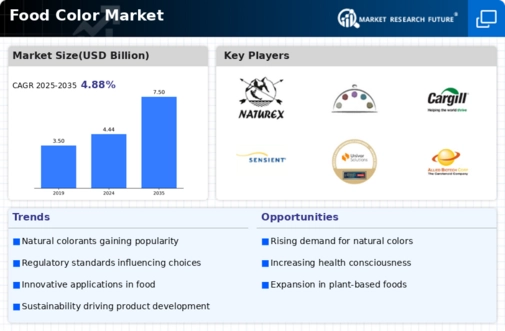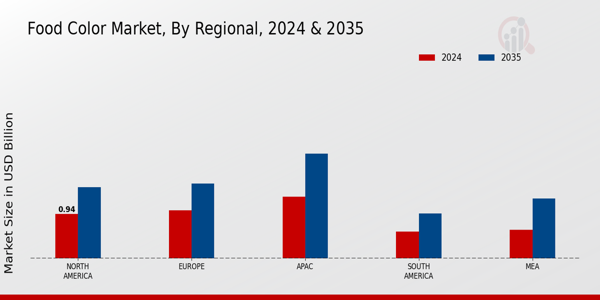Market Analysis
In-depth Analysis of Food Color Market Industry Landscape
The market dynamics of the food color industry are shaped by a multitude of factors that influence consumer preferences, regulatory standards, technological advancements, and competitive landscapes. One of the primary drivers of growth in this market is the increasing demand for visually appealing and aesthetically pleasing food products. Consumers are drawn to foods that are vibrant, colorful, and visually stimulating, as color plays a significant role in influencing perceptions of taste, flavor, and overall sensory experience. Food colors are used to enhance the appearance of a wide range of food and beverage products, including confectionery, bakery, snacks, beverages, and packaged foods, driving market growth.
Moreover, the growing popularity of natural and clean label ingredients has fueled demand for natural food colors derived from plant-based sources such as fruits, vegetables, and spices. As consumers become more health-conscious and mindful of their dietary choices, there is a growing preference for food colors that are free from synthetic chemicals, artificial additives, and allergens. Natural food colors are perceived as safer, healthier, and more environmentally friendly alternatives to synthetic colors, driving market expansion and innovation in the natural food color segment.
Furthermore, regulatory standards and guidelines play a significant role in shaping market dynamics within the food color industry. Regulatory bodies such as the Food and Drug Administration (FDA) in the United States and the European Food Safety Authority (EFSA) in Europe set strict standards for the safety, labeling, and permissible usage levels of food additives, including food colors. Manufacturers must ensure compliance with regulatory requirements regarding ingredient sourcing, purity, and labeling to ensure the safety and quality of food color additives. Changes in regulatory standards or the introduction of new guidelines can impact product formulations, manufacturing practices, and market accessibility, influencing market dynamics.
Additionally, technological advancements and innovations in food color production and application methods drive market growth and differentiation. Advances in extraction techniques, encapsulation technology, and microencapsulation enable manufacturers to produce natural food colors with improved stability, solubility, and shelf life. These technological innovations allow for greater flexibility and versatility in food color formulations, enabling manufacturers to create a wide range of vibrant colors without compromising on quality or sensory attributes. Moreover, innovative application methods such as spray drying, emulsification, and extrusion enable precise and uniform color dispersion in food and beverage products, enhancing product aesthetics and consumer appeal.
Despite the numerous growth drivers, the food color market also faces challenges and constraints. One of the main challenges is the perception of artificial colors as potentially harmful or unhealthy. Synthetic food colors such as tartrazine, sunset yellow, and allura red have been associated with adverse health effects, including hyperactivity in children and allergic reactions in sensitive individuals. As a result, there is growing consumer demand for transparency and accountability in food labeling, prompting manufacturers to reformulate products with natural and clean label alternatives to synthetic colors.
Moreover, price volatility and supply chain disruptions can impact market dynamics within the food color industry. Natural food colors derived from plant-based sources are susceptible to fluctuations in raw material prices, seasonal availability, and environmental factors, which can affect production costs and pricing for food color additives. Additionally, supply chain disruptions such as adverse weather conditions, crop failures, and transportation delays can impact the availability and affordability of natural food color ingredients, posing challenges for manufacturers and suppliers alike.














Leave a Comment